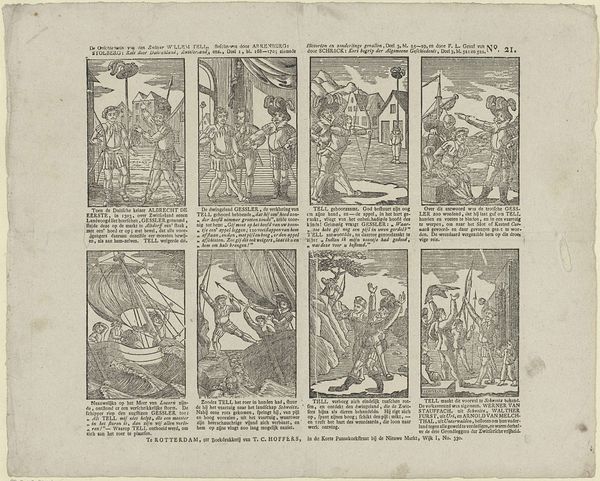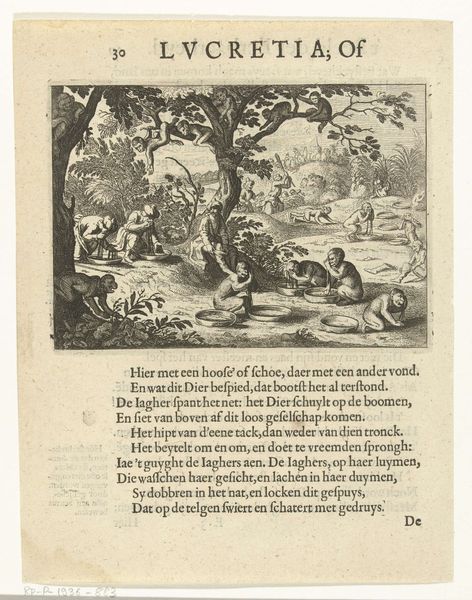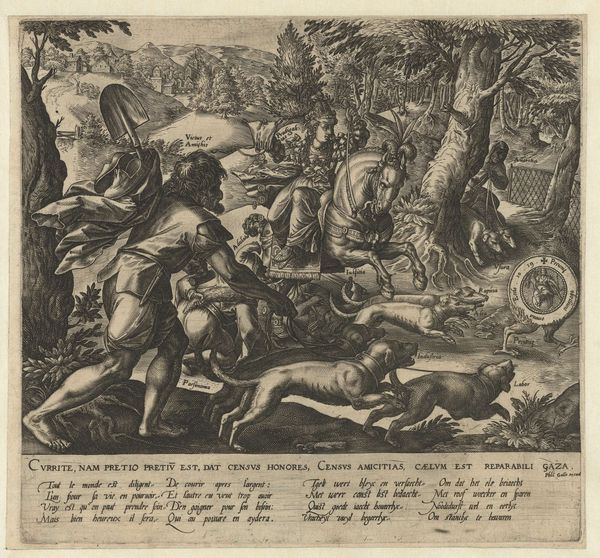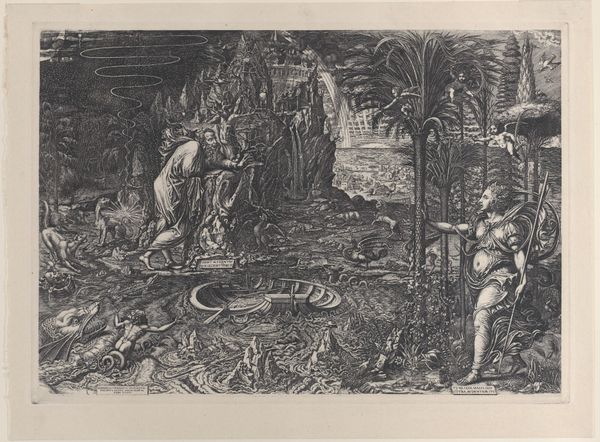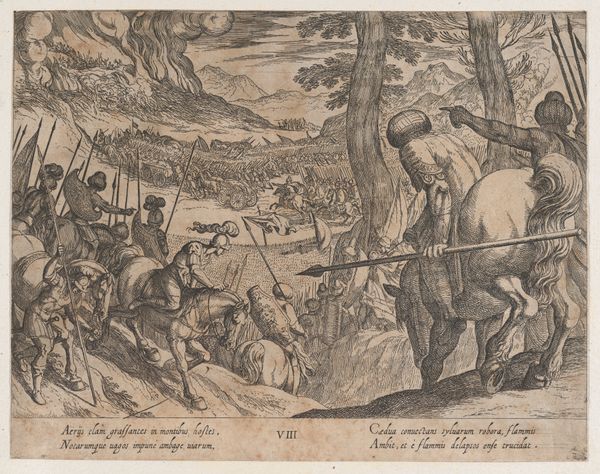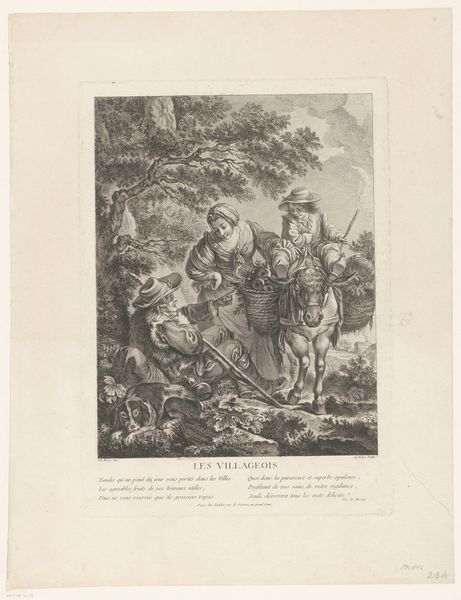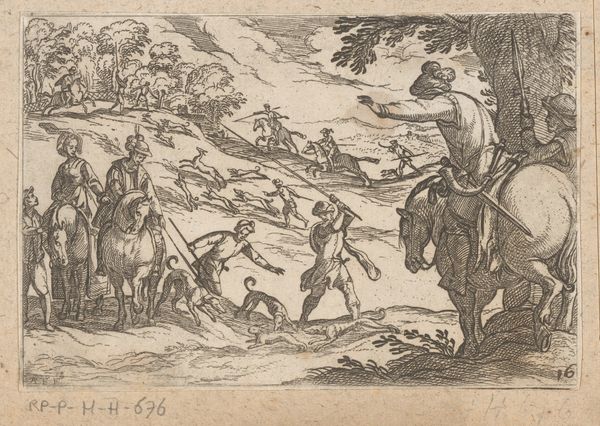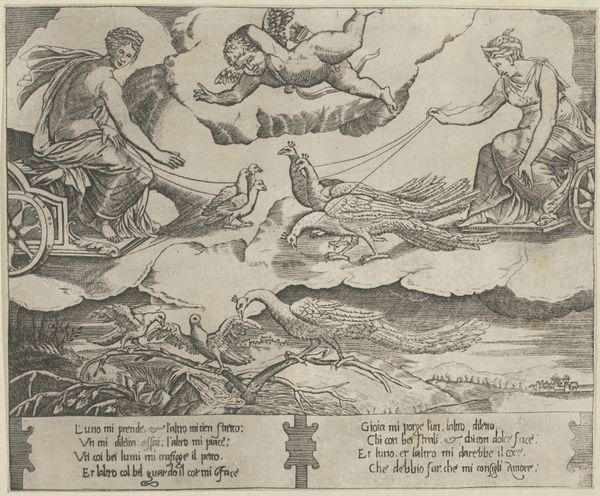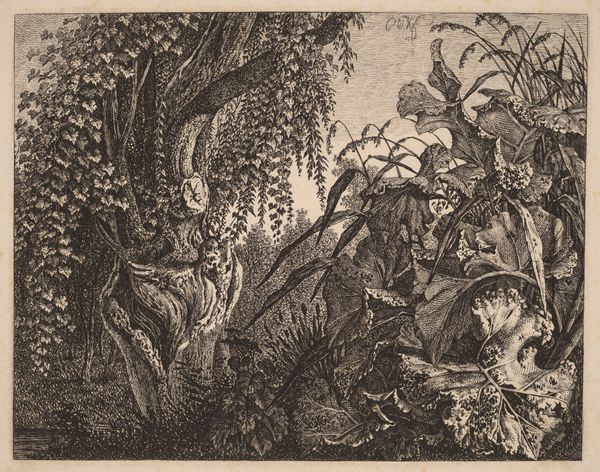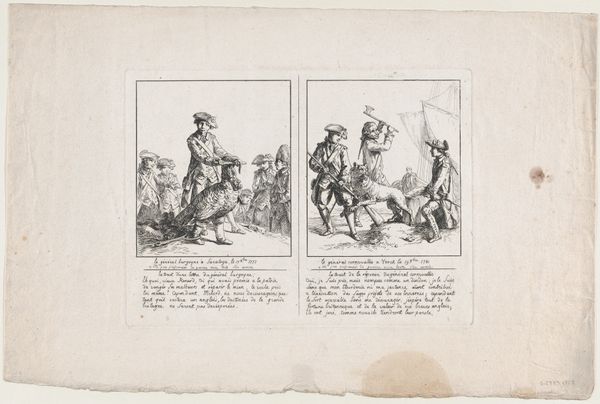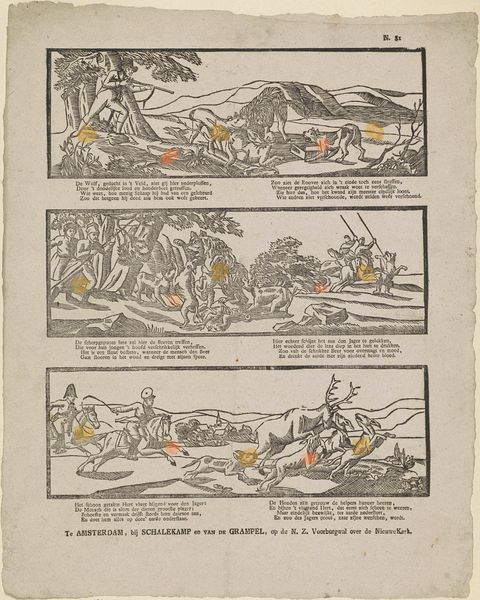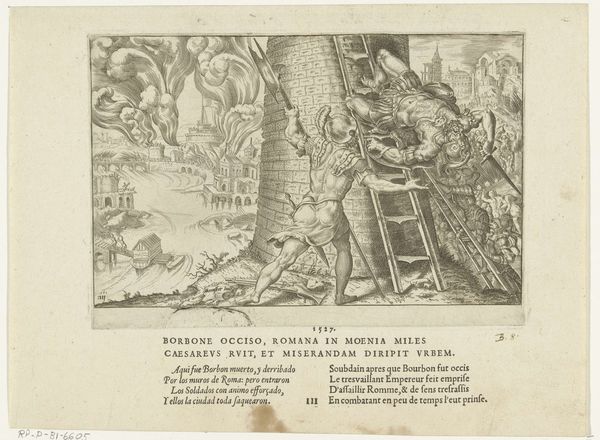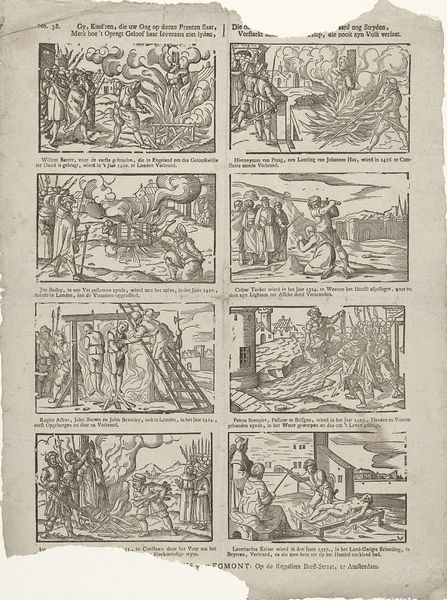
Samson jaagt de vossen met brandende fakkels aan hun staarten in de velden van de Filistijnen 1524
0:00
0:00
print, woodcut, engraving
# print
#
landscape
#
figuration
#
woodcut
#
line
#
history-painting
#
northern-renaissance
#
engraving
Dimensions: height 145 mm, width 95 mm
Copyright: Rijks Museum: Open Domain
Georg Lemberger made this woodcut, "Samson jaagt de vossen met brandende fakkels aan hun staarten in de velden van de Filistijnen," around 1530. It illustrates the biblical story of Samson's revenge on the Philistines. Here, we see a dramatic scene that reflects the religious and social anxieties of the early 16th century. The story itself, taken from the Book of Judges, highlights themes of rebellion against oppression, with Samson embodying resistance against foreign rule. Lemberger was working in Germany during the Reformation. The choice to depict a story of religious and cultural conflict is particularly relevant. The composition, with its stark contrasts and dynamic figures, conveys a sense of turmoil. The landscape is not just a backdrop but an active participant in the drama. The use of the printing press allowed such images to be widely disseminated, influencing public opinion and contributing to the broader religious and political debates of the time. Art historians rely on textual analysis, historical context, and print culture studies to interpret such works.
Comments
No comments
Be the first to comment and join the conversation on the ultimate creative platform.
